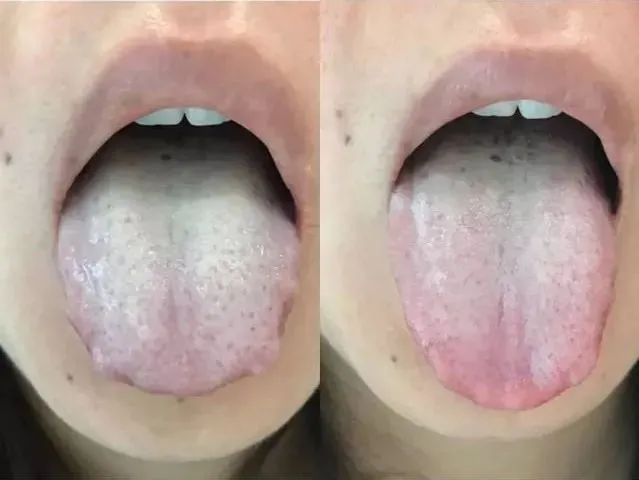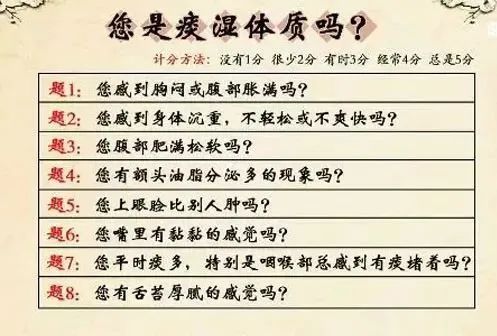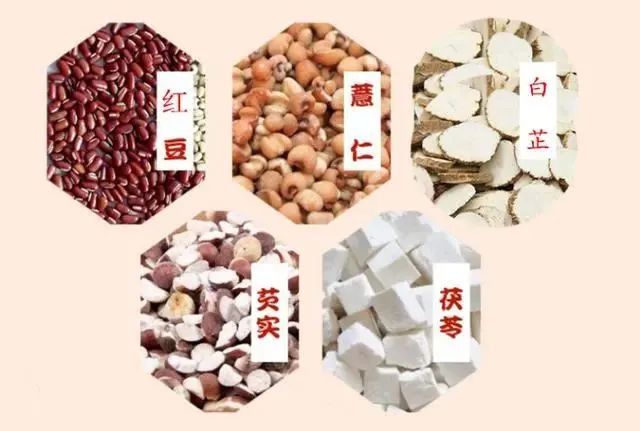
What is “Phlegm-Damp Constitution”?
The “Phlegm-Damp Constitution” is often caused by the invasion of cold and dampness, irregular diet, congenital endowment, aging, chronic illness, and lack of exercise, leading to dysfunction of the internal organs, impaired circulation of Qi, blood, and body fluids, resulting in the accumulation of water and dampness, which transforms into phlegm. Individuals with this constitution often have a corpulent body, with a soft and distended abdomen.
What are the manifestations of “Phlegm-Damp Constitution”?
Individuals may exhibit oily skin, excessive sweating, chest tightness with phlegm, a yellowish and dull complexion, easy fatigue, a swollen tongue, and a white greasy coating; or a sticky mouth, slight eyelid edema, a sweet taste in the mouth, a heavy body feeling, a slippery pulse, a preference for rich and fatty foods, slightly turbid and infrequent urination, and normal or slightly loose stools.

Predisposition to diseases in “Phlegm-Damp Constitution”
Common symptoms include cough, asthma, excessive phlegm, dizziness, gastrointestinal discomfort, vomiting, and a tendency to develop chronic bronchitis, bronchial asthma, emphysema, arteriosclerosis, chronic gastritis, chronic enteritis, diabetes, coronary heart disease, and obesity.

If the total score exceeds 21 points,
it can be preliminarily determined as Phlegm-Damp Constitution.
No.1
Dietary Regulation
Choose foods that eliminate dampness and resolve phlegm, and maintain a light diet. Regularly consume foods that can disperse lung Qi, strengthen the spleen, benefit the kidneys, transform dampness, and promote the flow of the San Jiao (Triple Burner). Common foods include Coix seed (Yìyǐrén), red adzuki beans (Hóngxiǎodòu), lentils (Biǎndòu), fava beans (Cāndòu), peanuts (Huāshēng), crucian carp (Jìyú), carp (Lǐyú), perch (Lúyú), lamb (Yángròu), radish (Láobō), Chinese yam (Shānyào), onion (Yángcōng), green beans (Dòujiǎo), winter melon (Dōngguā), seaweed (Zǐcài), water chestnut (Bǐlì), bamboo shoots (Zhúsǔ), and chili peppers (Làjiāo). Dietary restrictions: Limit salt intake, and avoid cold, rich, greasy, nourishing, sour, astringent, and bitter-cold foods.
No.2
Living Adjustments
Every bit of dampness increases cold; “cold generates dampness, dampness generates phlegm”. This means that cold and dampness can exacerbate phlegm-dampness in the body, increasing the risk of complications from Phlegm-Damp Constitution. Keep living spaces dry, engage in outdoor activities, avoid exposure to cold and rain, and regularly monitor blood sugar, blood lipids, and blood pressure.
No.3
Exercise
Principle: Gradual progression and long-term adherence. Engage in activities such as walking, jogging, table tennis, badminton, tennis, and swimming. The best time for exercise is between 2:00 PM and 4:00 PM when Yang Qi is at its peak, and aerobic exercises should be performed for a relatively long duration.
No.4
Medicinal Health Care
Rationally select herbs that have the effects of aromatically transforming turbidity, strengthening the spleen, and clearing and descending turbidity. Commonly used herbs include Poria (Fúlíng), Ginkgo (Bái guǒ), Pinellia (Bànxià), Coix seed (Yìyǐrén), Atractylodes (Bái zhú), Astragalus (Huángqí), Bitter Orange (Zhǐqiáo), Agastache (Huòxiāng), Eupatorium (Pèilán), Atractylodes (Cāngzhú), Cardamom (Bái dòukòu), Areca (Bīngláng), and Alisma (Zéxiè). It is also advisable to consume foods that are beneficial for the spleen and dampness, such as Chinese yam (Huáiyāo), coix seed (Yìmǐ), lotus seeds (Liánzǐ), water chestnuts (Qiànshí), and red adzuki beans (Hóngxiǎodòu), and to provide appropriate warmth to help expel dampness through urination.


Yan Xiaorui
Associate Chief Physician
Specializes in the combined treatment of digestive system diseases, cerebrovascular diseases, facial paralysis, cervical and lumbar spine diseases, and bone and joint diseases.
Text and images source: Yan Xiaorui

Convey the latest hospital dynamics
Share recent activities within the hospital
Serve the vast medical staff
Popularize more professional knowledge


